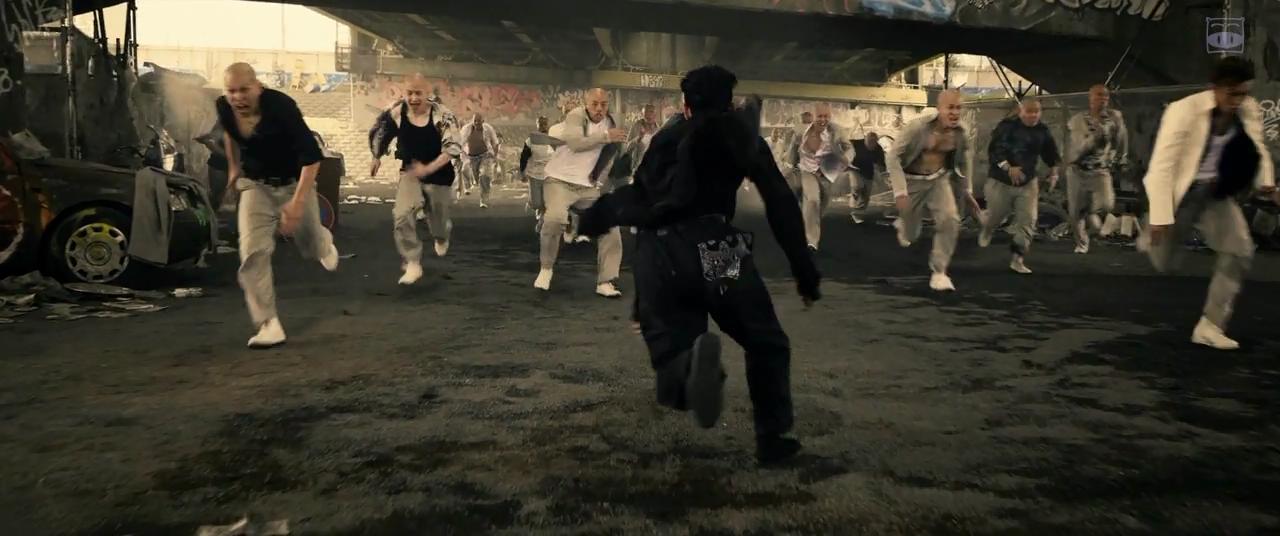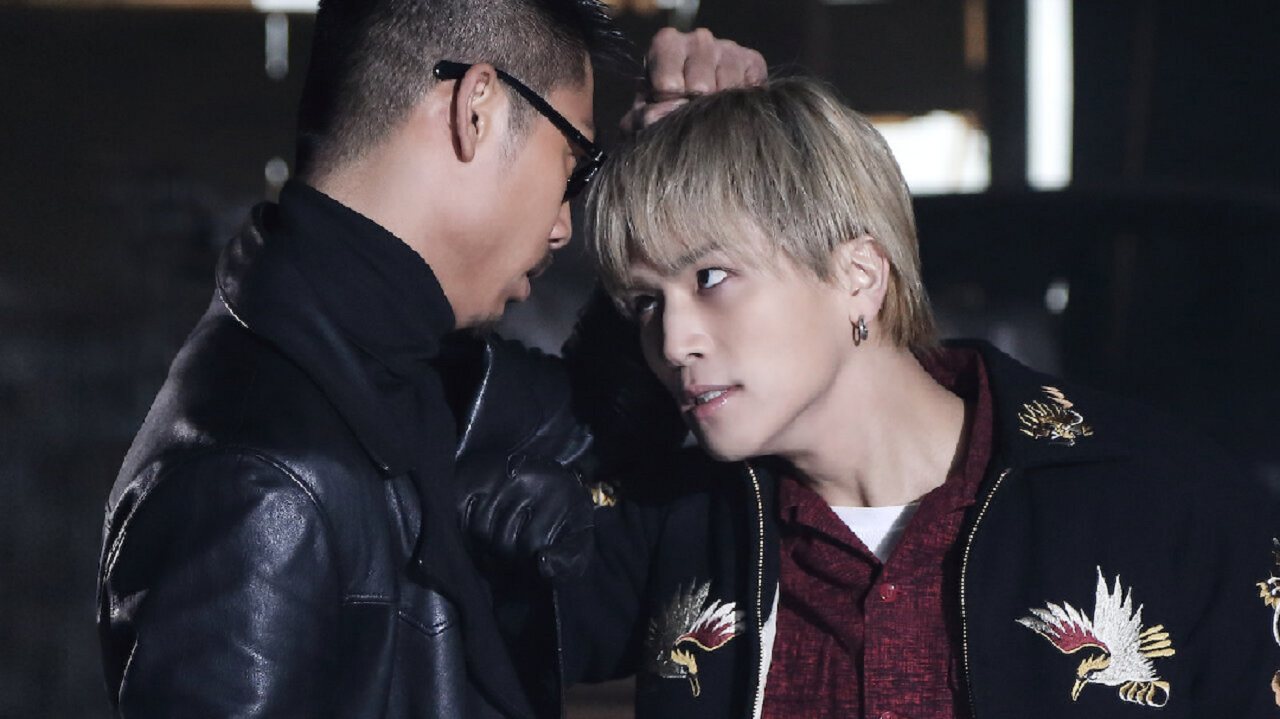The High&Low film series (available via Netflix in the west) is many things. First and foremost, the film series offers some of the most wildly entertaining action to come out of Japan’s cinema industry in recent years. The action in these films is big. So big that you’d be forgiven for thinking there’s not much to them beyond those fight scenes.
It’s also, effectively, an advertisement for Exile Tribe, a male pop idol behemoth in Japan that can afford to produce films, television series, music CDs, anime, games, and more as a vehicle to build the profile of a number of its stars. Exile Tribe make up the majority of the main cast in these films, and their roles are very carefully manicured to maximise their star power.
You are watching: High&Low: Dumb action and the spirit of revolution
But before you dismiss these films, also consider that perhaps coincidentally, but also perhaps not, there are some heavy parallels between High&Low and an Akira Kurosawa film (one of Kurosawa’s very finest), from the 60’s, also titled High and Low. The High&Low series is commercialised to a degree that rivals Marvel, but there is also something to these films, and that something makes them more thought-provoking than they have any right to be.
The basic premise is this: There’s a large suburb within an unnamed city in Japan where the lowest of the unfortunates live: It’s called S.W.O.R.D., with each letter in the name representing one of the five gangs that control a slice of the overall territory. They fight among themselves often enough, but they’re also fiercely protective of their homes, and, as the films roll on, these gangs find more and greater cause to come together in alliances to face off against greater, existential threats from outside. The most significant of these is no less than a yakuza clan that has made a deal with politicians to reduce the area to rubble and build a casino over the top.
Within that overall narrative structure there are a number of smaller, personal stories that play out, among characters that are affiliated with and supporting these gangs, but not explicitly part of them. They’re largely there to add some characterisation and emotional weight to the action, and push the narrative forward when fists will not. However, despite being pretty well performed (Exile Tribe didn’t get to where it is as an institution by hiring b-listers) the main reason you’re watching is for the build to the big set-piece battles, which are viscerally high in impact and riotously entertaining.

Part of what makes them so entertaining is that each of the five gangs (and their rivals) has their own unique fighting style. There’s the parkour athletes in the Rude Boys gang, for example, the wild antics of the party-hard Daruma mob, and the Road House-like approach to beat downs that the club-owning White Rascals take. When they come together for those major battle scenes, the action is vivid, dynamic, and energetic because of the variety of fighting styles that you’ll see.
Read more : Olde English 800 40 oz | 5,9% | 1,183 l
Above and beyond that, though, these films are, like so many other gang films, enjoyable because they’re rebellious and youthful. The people in the gangs aren’t bad people at all, for all their violence. This is partly because they are, again, advertisements for Exile Tribe and commercial reality demands that we see these people as heroes rather than villains. But there’s also thematic weight to that. The various gang members in High&Low are, simply, living free. Yes they’re destitute, but they have the comradery of one another, they’re not inhibited by pesky things like laws, and they’re freely able to pursue the life and existence that suit them and their world view. One of the gangs is made up of students from a delinquent high school, where the teachers are not a presence at all. It is, no doubt, the dream scenario of many Japanese students.
There’s nothing innovative about the structure of High&Low, of course. There are plenty of other films, books, and the rest that canvas exactly what High&Low does. This is particularly true in Japan where a heritage of films, television, games, and associated media featuring cities split into warring gang territory stretches back decades. Sion Sono’s brilliant Tokyo Tribe is what High&Low would be if the gangs were actually gangs and not nice people underneath it all. Meanwhile, over in video games, there’s a very niche PlayStation Vita and PC title called Tokyo Tattoo Girls. That game didn’t go down too well with critics or audiences, but it’s stuck around in my mind thanks to its treatment of this exact theme (and also the developer is associated with a Sion Sono project).
This genre provides a rollercoaster of entertainment, ranging from laugh out loud funny through to wince-inducing from the crunching violence. But they also generally have something to say, and a role to play in the socio-cultural discourse, particularly around the position of youth in Japanese society.

The association with Kurosawa
Again, I’m not sure if High&Low is meant to be a reference to Kurosawa’s High and Low. The latter is not a gang wars film (rather it’s a crime fiction film about a kidnapping), and it’s hard to imagine something so overproduced would be principally influenced by one of the great masters of the cinema art form… but then again look at what happened when they took Shakespeare and turned it to a teen comedy in Ten Things I Hate About You. These odd influences do happen.
In truth, there is a pretty clear parallel at play, in that both High&Low and High and Low have a strong class war undercurrent to them. To summarise Kurosawa’s film very quickly, there’s a man that has recently bought into a business by mortgaging his home, so he’s firmly upper class, though deeply in debt. A desperate and impoverished criminal kidnaps what he thinks is this man’s son and demands a ransom. Naturally the wealthy man is keen to get his son back… but then he discovers that it’s actually his chaffeur’s son that has been kidnapped, though despite that revelation the criminal continues to insist that he pay the ransom. Cue a moralizing story about self interest versus a great good: do you bankrupt yourself to save someone that you can… even if they’re of low socio-cultural position and you, the wealthy, are not personally invested in them?
Kurosawa’s film is the highest of high art, with impeccable cinematography and a density that goes far deeper than this article has scope for. High&Low might not be a great work of art like Kurosawa’s work, but it has its own take on the class war.
Read more : Earth Class Mail Pricing Demystified
I realise this is about to sound ridiculous, but the yakuza – who, remember, are the primary antagonist of High&Low – are considered somewhat elitist within Japanese society. They’re an old guard of criminal activity, and between their wealth, their rigid hierarchies, and their laws, it’s actually easy to draw parallels between them, and Japanese society itself, with the yakuza representing the establishments, the money, and the older generations.
The gangs in High&Low, meanwhile, are all young, poor, and disenfranchised. In resisting the yakuza, they are rebelling against the society itself around them. Like the younger generations in most parts of the world, the Japanese youth face social challenges. It’s hard to find work, it’s hard to buy a property and raise a family, and their aspirational goals are often not about winning the system and rising to the top – few harbour that aspiration any longer – but rather being free of it all. High&Low definitely speaks to that aspiration in the way that it depicts the gangs living a simpler and, for all the violence, friendlier existence.
So, in its own way, High&Low is as invested in the class war, and as critical of the bourgeoisie. It’s surreal that they’re represented by the yakuza, but they’re the powerful, corrupt, and immoral. These gangs, with their hearts of gold, represent the spirit of revolution and the increasingly aggressive disenfranchisement of the youth. It might lack the subtleties and nuance of the Kurosawa work, and you really do need to keep in mind that these films are commercials and part of an idol group’s talent and profile development strategy, but, nonetheless, there really is something deeply interesting about these films.

The Order To Watch Them
It can be a little confusing to understand the order in which you’re meant to watch the High&Low series. They do form part of an extended narrative arc, so you should watch them in the correct order. Chronologically it goes like this:
- Road to High&Low (this is a digest of key scenes from the unlocalised TV series, and will catch you up on events before the movies themselves)
- High&Low The Movie
- High&Low The Red Rain
- High&Low The Movie 2 / End Of Sky
- High&Low The Movie 3 / Final Mission
There are some other spin-off films and the like, but these five films comprise the core narrative, and watching them first, in this order, is the best way to experience High&Low.
Note: This article originally appeared in the February 2022 edition of the Dee Dee Zine. We have ceased to produce that magazine, so we have republished this feature here in full for your reading pleasure.
Source: https://antiquewolrd.com
Categories: Stamps

